The Last of Us arrived in 2013 on the PlayStation 3 and almost instantly won gamers over with its gripping narrative, challenging stealth and survival gameplay, and unique spin on the well-worn genre of zombie drama. But after Joel and Ellie reach the end of their journey in the first game, what should you play next? The Last of Us: Part II is likely to be your next game (and we’ll talk about it here), but what if you want a nice palate cleanser in between? Or maybe you prefer Pedro Pascal and Bella Ramsey’s portrayal of Joel and Ellie in the excellent HBO adaptation and want to wait for the second season to see what happens next?
Read More: HBO’s The Last of Us Show Just Nailed One of the Game’s Best Moments
Here are 11+ games to consider scavenging for after playing The Last of Us for the first (2013’s initial release), second (2014’s remaster), or third time (2022’s remake). Many of these share the same horror genre as TLoU, but there are a few other surprises here, including an RPG and a multiplayer title that might feel just resonant enough to be an excellent follow-up to an excellent game.
A Plague Tale: Innocence
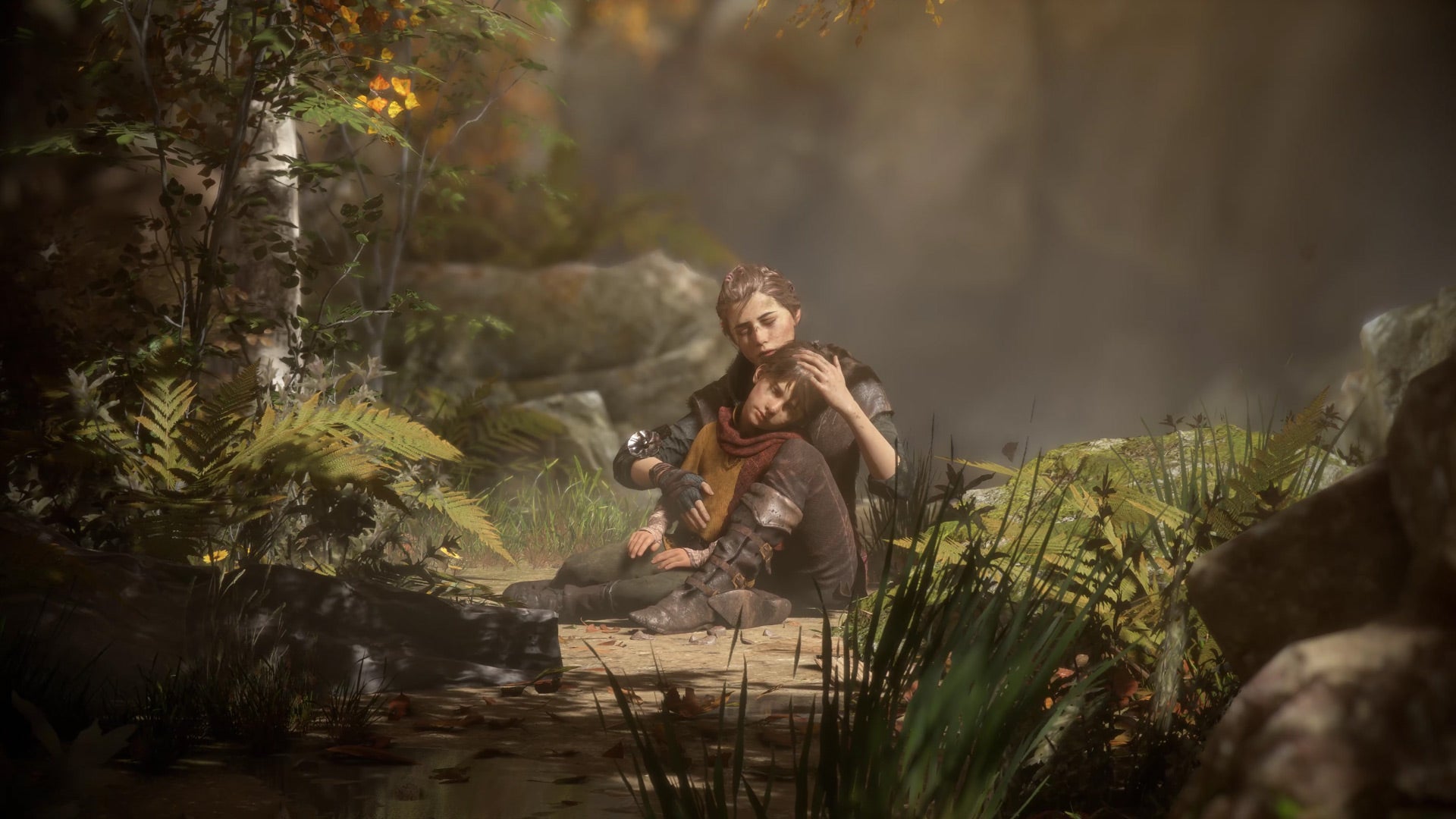
If you want more: Survival horror with an emphasis on stealth, games where two protagonists must persist against insurmountable odds
Notable Differences: More sophisticated stealth scenarios, less action-oriented, less fighting
Availability: Windows (Steam Deck YMMV*), Xbox One, Xbox Series X|S, PS4, PS5, Nintendo Switch, Amazon Luna
If you’ve been holding out on A Plague Tale: Innocence since its debut in 2019, it’s time to change that. Asobo Studio’s survival game set in 14th century France is an excellent follow-up to The Last of Us. Innocence ought to be at the top of your list after wrapping Joel and Ellie’s adventure. Honestly, play it before going onto TLoU’s sequel.
On paper, A Plague Tale and The Last of Us have a number of dramatic similarities: Both chronicle the story of two survivors who must rely on each other in a world ripped apart by an unstoppable plague. Like Joel, Amicia is responsible for the safety of a younger and much more vulnerable person: Her brother Hugo. Younger in age, and prone to panic attacks, Amicia is all that stands between Hugo and a world that offers no kindness.
Where these two games diverge, however, is where things get really interesting. First, Amicia and Joel are wildly different characters. TLoU easily frames Joel as someone who’s more than up to the challenge of surviving and fighting off hostile human forces and infected. Amicia though? Without the years of experience of survival and misery that make up Joel, she, and by extension you as the player, must persist in spite of obvious vulnerability and will hopefully not come out the other end bitter and cynical. The result is a very different tone in both narrative and gameplay, one that I’d argue doesn’t celebrate or default to violence the way TLoU frequently does. The game also has a far more maternal tone, with less masculine-coded aggression across the board.
A Plague Tale also features a dramatic change of pace with its plague-spreading rats than TLoU does with its infected. Though clickers and bloaters present their own unique challenges for Joel, the gameplay scenarios in TLoU are more of an amplification of the same gameplay loop whether you’re fighting humans or infected: Sneak around, do a stealth kill, default to third-person shooter mode if you get spotted. A Plague Tale doesn’t have the same shooter gameplay to fall back on; and as a stealth game, it’s a bit more nuanced.
When faced with swarms of rats in A Plague Tale, the stealth scenarios challenge you with balancing light and shadows instead of facing the threat through direct violence, something that Amicia wouldn’t be capable of and is clearly impossible given the scale of the swarms.
A Plague Tale also has gorgeous music and sound design. The sounds of the rats, particularly when they swarm toward bags of meat (in-game objects you can use to divert their attention), create a delightfully unnerving feeling that will send a chill through your body.
Aside from TLoU’s sequel, and unless you’re looking for a dramatic change in genre, A Plague Tale is perhaps the best game to play after travelling across the country with Joel and Ellie.
*Your mileage may vary
The Uncharted Series
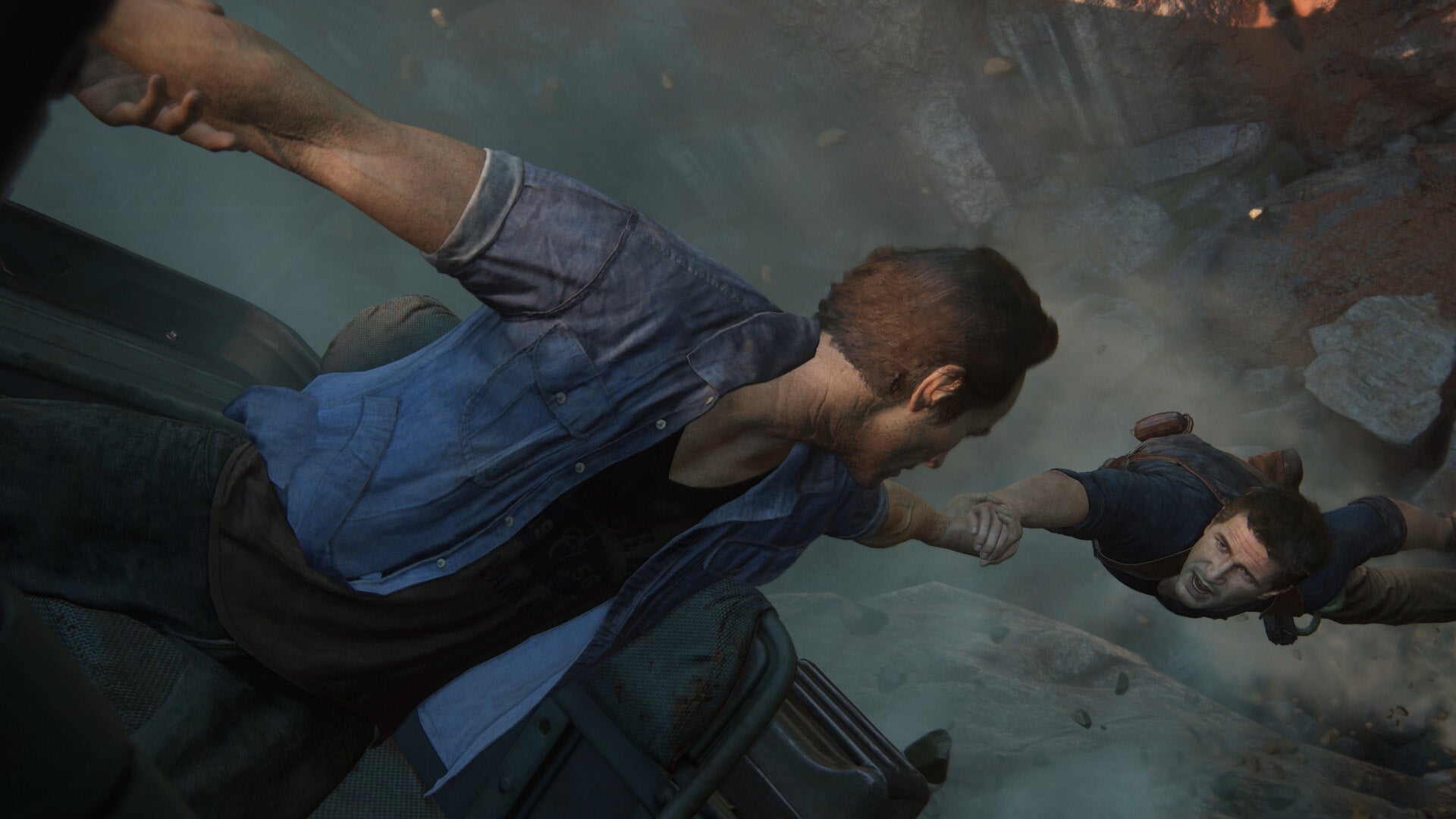
If you want more: Naughty Dog game design, third-person action with an emphasis on aiming and shooting, memorable characters
Notable Differences: Almost no horror (despite some spookiness), dramatic switch in tone from TLoU, lengthy climbing sequences, Hollywood-esque action with way more shooting and explosions, dramatically less stealth
Availability:
Uncharted: Drake’s Fortune: PS3
Uncharted 2: Among Thieves: PS3
Uncharted 3: Drake’s Deception: PS3
Uncharted: Golden Abyss: PlayStation Vita
Uncharted: The Nathan Drake Collection: PS4, PS5
Uncharted 4: A Thief’s End: PS4, PS5
Uncharted: The Lost Legacy: PS4
Uncharted: Legacy of Thieves Collection: Windows (Steam Deck OK), PS5
The Last of Us emerged at the end of the PS3’s life, and prior to it winning us all over with a brutal and lasting tale of the struggles of survival and found family, Naughty Dog made waves on the console with Uncharted. It was internally referred to as “Dude Raider,” given its obvious similarities to another well-known PlayStation-originated series. In Uncharted you’ll explore abandoned ruins with perilous climbing challenges, get into tense shootouts with the bad guys, and hopefully score some sweet treasure along the way.
While the first entry, Drake’s Fortune, is a fun-enough experience (and should be played if you want to play the whole series), things really come together in the first sequel: Uncharted 2: Among Thieves, which remains one of the best and most fun action games you can currently play.
Read More: 16 Of The Best Action Games You Can Play In 2023
Uncharted shares a lot of DNA with The Last of Us, which should be obvious considering it’s Naughty Dog’s other active and popular series. You will find the gunplay to be remarkably more explosive and action oriented, but that might be a welcome change if TLoU’s sludgier pace started to wear on you.
Oh, and don’t bother watching that movie. Watch this instead:
Metal Gear Solid V
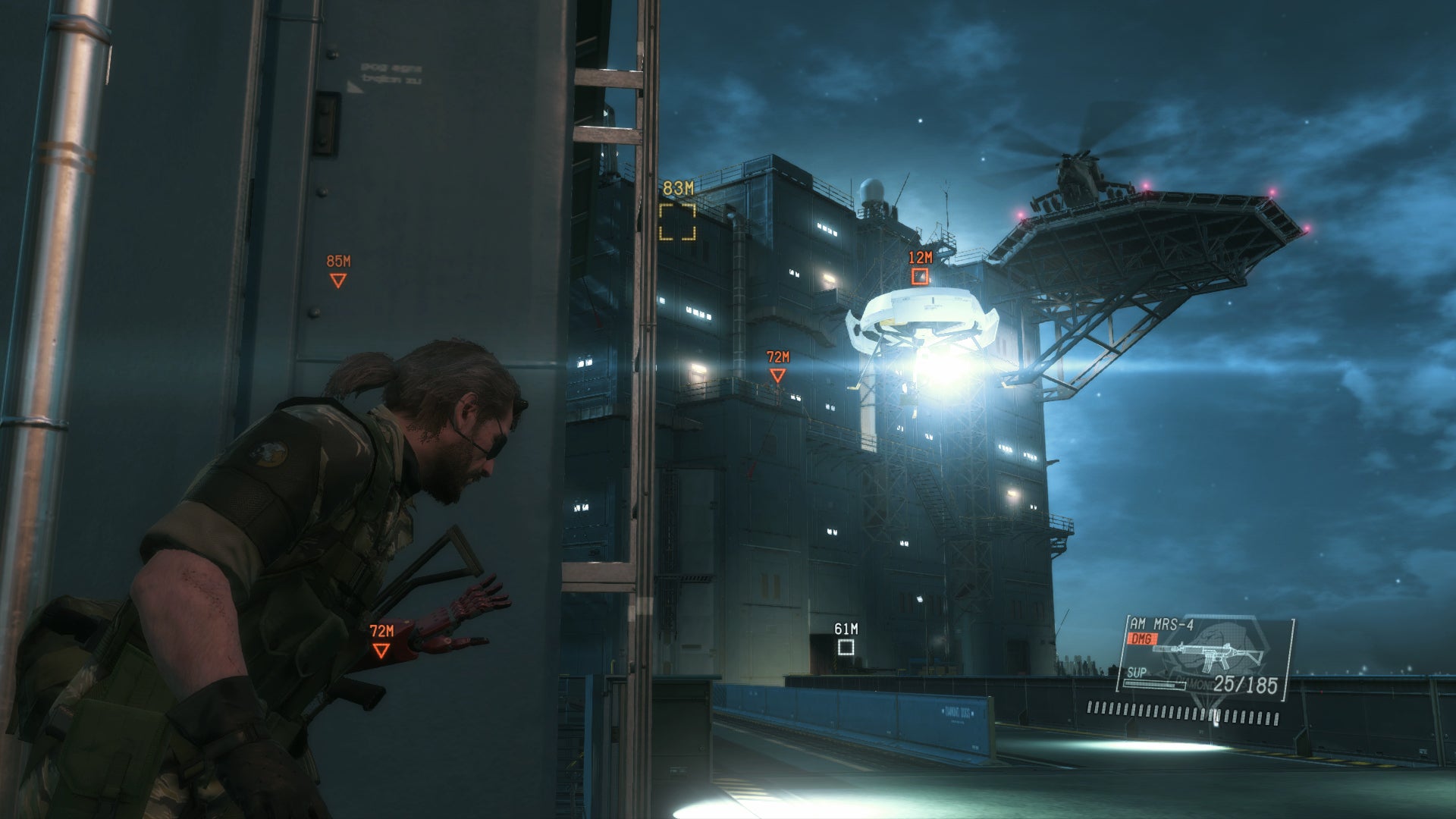
If you want more: Third-person stealth action, narrative themes that get stuck in your head
Notable Differences: Less traditional form of storytelling, more combat, more nuanced stealth, base-building components, open world environments
Availability:
Metal Gear Solid V: Ground Zeroes: Windows (Steam Deck OK), Xbox One, Xbox Series X|S, PS3, PS4, PS5
Metal Gear Solid V: The Phantom Pain: Windows (Steam Deck surprisingly not OK) Xbox One, Xbox Series X|S, PS3, PS4, PS5
While Metal Gear Solid fans such as myself might’ve found Hideo Kojima’s final statement in the series to fall short of the narrative standard the games have been known for, few would deny that this entry contains some of the best stealth action in the franchise. If The Last of Us’ stealth challenges really drew you in, Metal Gear Solid V (both Ground Zeroes and The Phantom Pain, or as a combo package in The Definitive Experience) has sneaking as one of its main courses, featuring an elaborate set of equipment and mechanics to learn and master.
MGSV’s story is, disappointingly, mostly told through collectible cassette tapes. But what it lacks in the story department, it more than makes up for with a lovely sandbox of stealth encounters, offered to the player as replayable missions. You can go back to try out new techniques, new gear, and there are ranking systems and challenges.
But let me not throw MGSV’s narrative completely under the bus. Though sometimes hard to parse, it is a story about the intersections of identity, culture, language, military expanse, imperialism, and, as the series has been known for, nuclear war. It aims to tackle some rough themes, particularly in the opening Ground Zeroes chapter where it’s hard to ignore the parallels to real world conflicts and themes of detainment and interrogation. MGSV aspires to handle these with more maturity and a sense of criticism more so than Call of Duty certainly will. Whether or not it all works will be up to you. But like The Last of Us, it will give you more than a few things to ruminate on long after the credits have rolled.
There’s also a horror element that comes around every now and then. MGSV isn’t a survival horror game by any stretch of the imagination, but it’s not afraid to get a little spooky.
Resident Evil 2 (Remake)
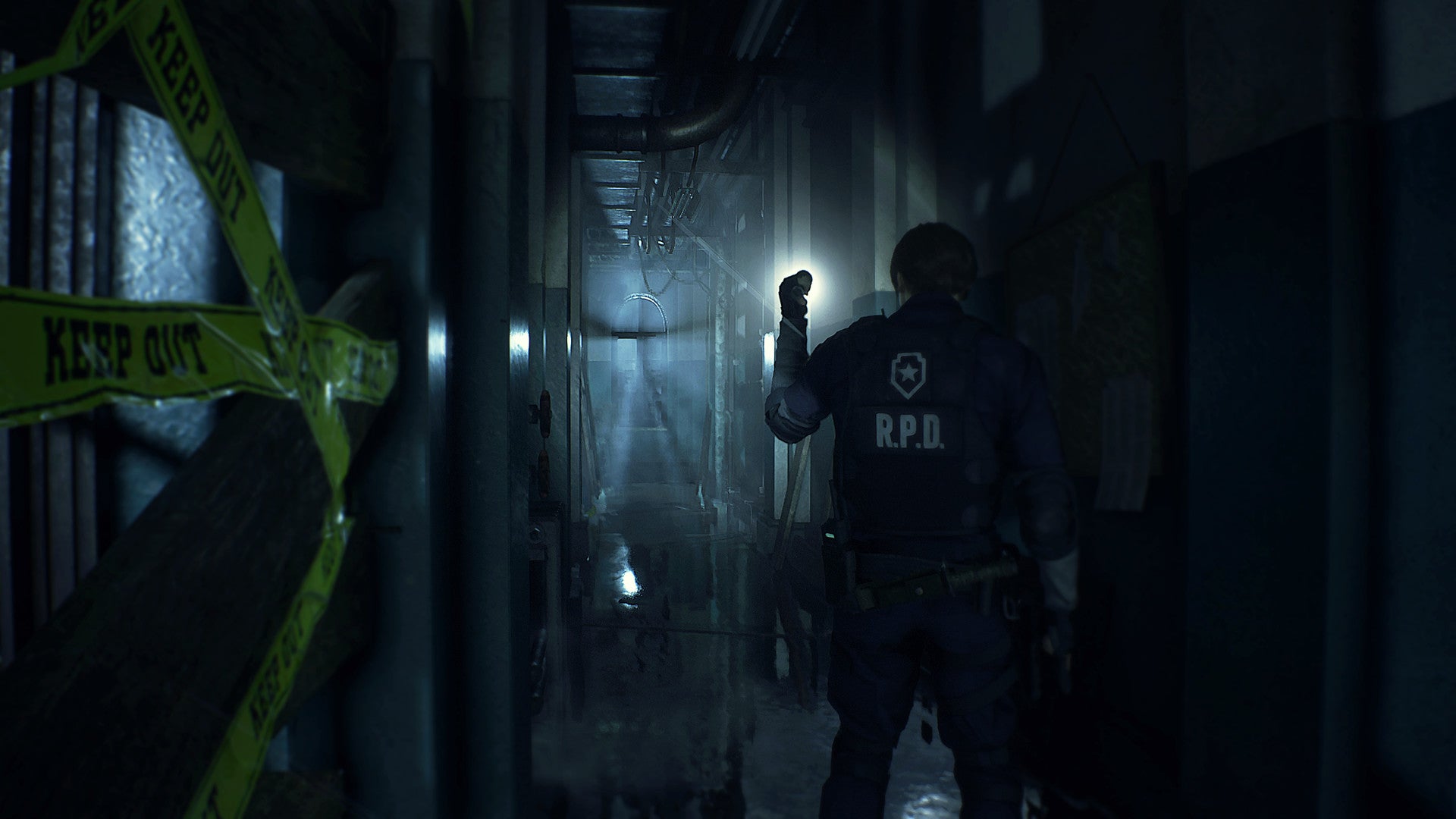
If you want more: Third-person survival horror
Notable differences: Way more varied enemy types, campier narrative themes
Availability: Windows (Steam Deck OK), Xbox One, Xbox Series X|S, PS4, PS5, Nintendo Switch, Amazon Luna
The 2019 Resident Evil 2 remake was an instant favourite for fans of the long-running series. Though many, such as myself, miss the days of fixed camera perspectives and tanky controls, it’s hard not to have a good time in Resident Evil 2’s remade third-person shooter identity. As a survival horror game, it’s got a ton in common with The Last of Us, though the setting seems less concerned with being as grounded as TLoU’s less-fantastical and less conspiracy-themed infected.
There are two ways to play Resident Evil 2: either as Leon or Claire. A good chunk of their separate adventures are very similar, but they’re distinct enough that you can enjoy two complete playthroughs of this. And Claire’s chapter, specifically with her role in protecting Sherry, a young girl with a complicated connection to the Umbrella Corporation, might remind you a bit of Joel and Ellie’s journey.
Resident Evil 2 features a number of series-signature puzzles of the kind TLoU doesn’t really have. You’ll be looking for card-themed keys, manipulating statues that are secretly guardians of key items, and the hide-and-seek puzzle that is the stompy Mr. X, who upon arrival will pursue you ambiently in the environment similar to the xenomorph in Alien: Isolation (which also isn’t a bad game to consider playing after TLoU).
As a third-person survival horror game, Resident Evil 2 is a great way to keep things spooky after spending time with Joel and Ellie.
Tom Clancy’s The Division 2
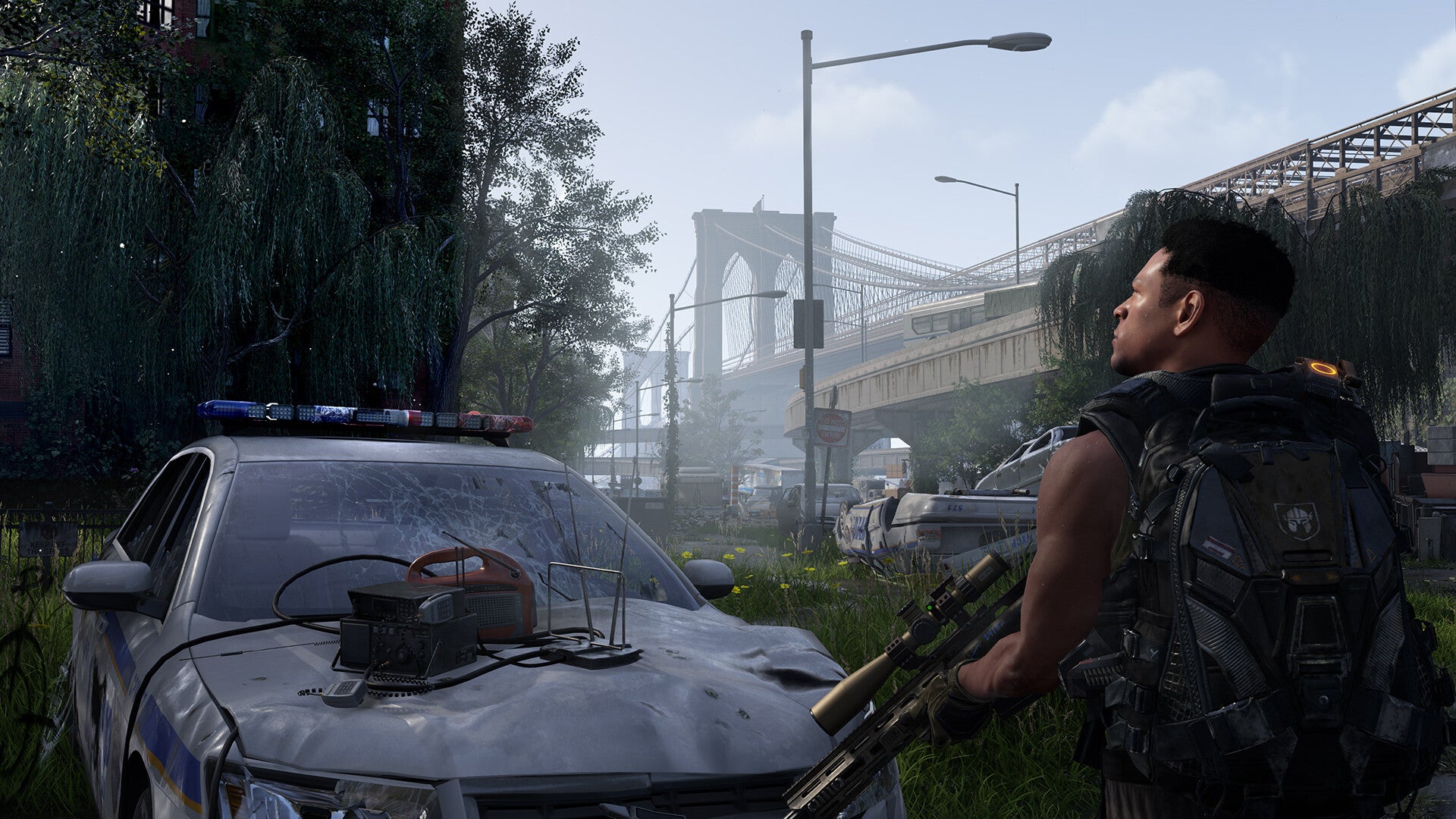
If you want more: Third-person shooting set in a plague-stricken post-apocalyptic America
Notable differences: Shitty politics, RPG mechanics, a live-service multiplayer-first experience
Availability: Windows (Steam Deck YMMV), Xbox One, Xbox Series X|S, PS4, PS5
If you got through The Last of Us and thought: “Hmm, I’d like to play a game where I RP as FEDRA and have come to believe all their propaganda as I go about ‘liberating’ society,” then The Division 2 will satisfy you. Inheriting the namesake of one of the most insidious conservative propagandists of our time, The Division 2 is what would happen if Destiny 2 and The Last of Us got together and had a kid — but imagine that child was locked in a room for several years and forced to watch Fox News on repeat. Just don’t let Ubisoft know it’s a political game.
If that chased you off of considering The Division 2 as a worthy multiplayer follow-up to The Last of Us, let me back pedal a bit. Until we get a better look at the actual multiplayer follow-up to The Last of Us, The Division 2 hits enough of the third-person post-apocalyptic vibes to be worth considering, and you can play it with friends (just don’t tell them you’re kinda sorta playing as cops in this game — and if they find out and get excited about that…uh, find new friends?)
If you have an appetite for loot management, skill and weapon progression, and a pretty damn good tactical third-person shooter, The Division 2 has reached a level of mechanical and content maturity in the last few years that’s worth diving into. It bears enough surface similarity to The Last of Us’ themes and gameplay, and is easy to pick up and play (especially compared to something similar like DayZ). You’ll get a quick-enough sense of whether or not this is a good fit for your regular weekly multiplayer sessions.
The Witcher 3: Wild Hunt
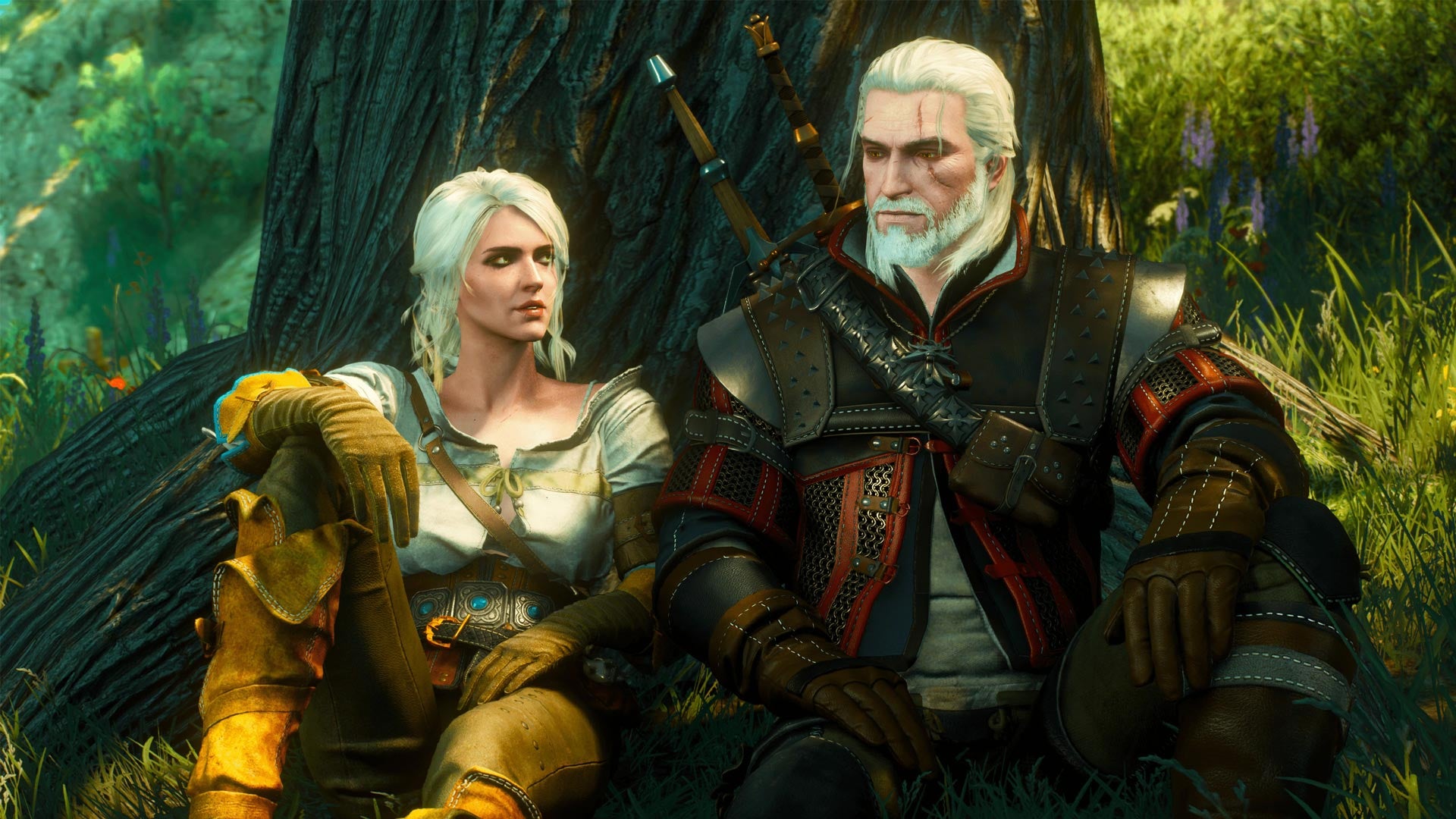
If you want more: Games with excellent characters and themes of found family
Notable differences: Roleplaying game structure and mechanics
Availability: Windows (Steam Deck OK), Xbox One, Xbox Series X|S, PS4, PS5, Nintendo Switch
The Witcher 3 is an unlikely follow-up to The Last of Us, but there’s a good reason it should be on your list after Joel and Ellie’s first journey together: It’s another well-written game filled with endearing characters who come together in the face of hardship.
In The Last of Us, Joel loses his family early on with the death of his daughter. In the world of The Witcher, Geralt’s forced transformation into a witcher denies him any chance of a biological family of his own. The Witcher 3 opens with Geralt searching for those who are the closest he could ever know as family: Yennefer and Ciri. Like Joel, Geralt’s connection with Ciri is an opportunity for him to establish a missing familial bond and feel that sense of belonging and purpose that he clearly values and desires. As a fantasy story, the plot escalates to feature some high magical concepts, but at itscore it’s a relatable and human story of loss and connection, exploring the lengths many of us will go to hold on to those who are most important to us.
In terms of gameplay, The Last of Us and The Witcher 3 have almost nothing in common. If you’ve an appetite for a lengthy open-world RPG (one of the best out there, I might add) The Witcher 3 will present you with a cast of delightful characters who are written and brought to life so well that you’ll feel like you’ve known them your whole life.
Finally, feel free to jump into The Witcher 3 first. While the first two games are wonderful and should be played, it’s very easy to jump into the third entry and it makes for a much better first impression than the original Witcher. Afterwards, you can check out our guide on what to play following Geralt of Rivia’s curtain call.
Days Gone
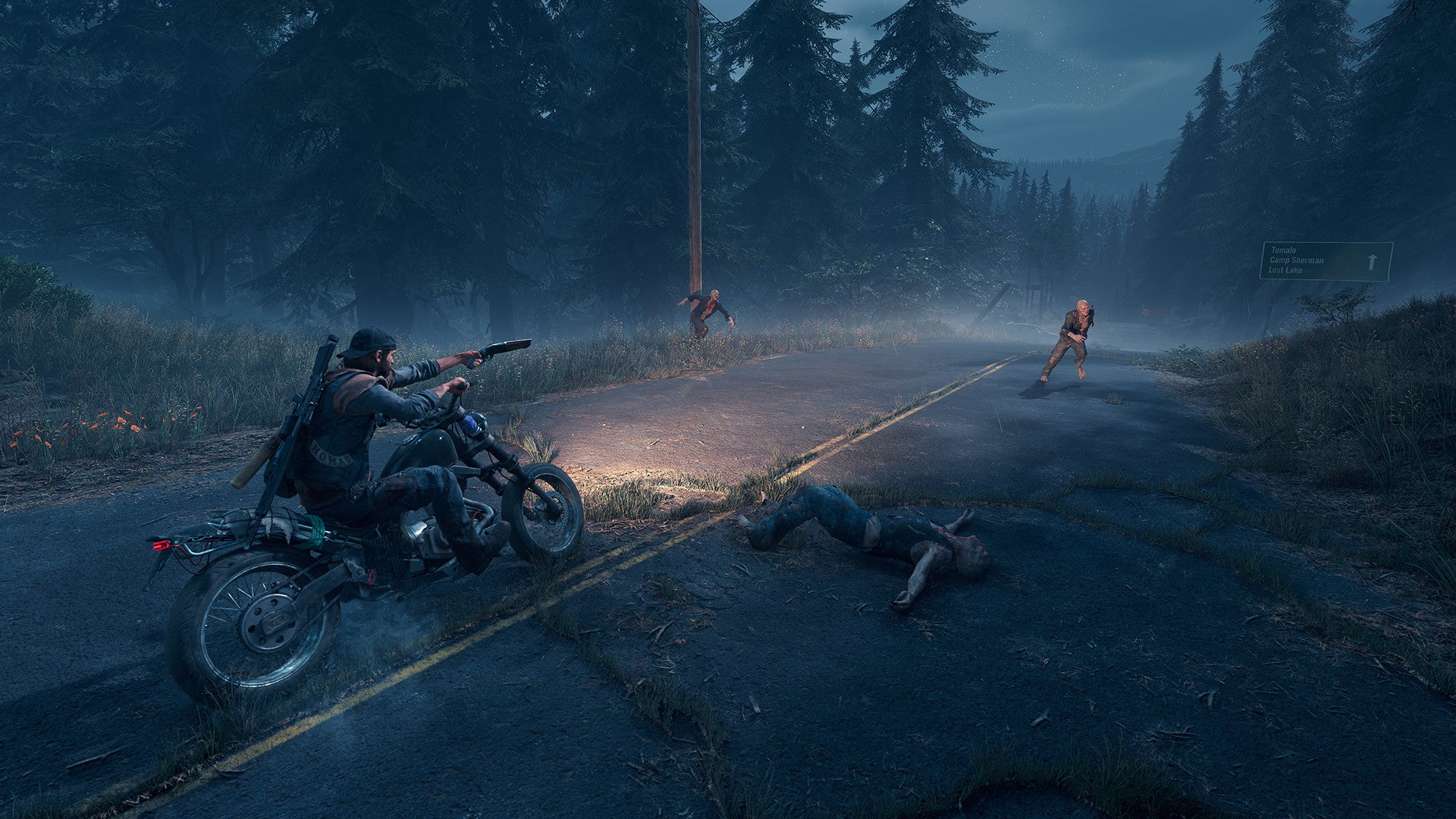
If you want more: Zombie-themed survival horror
Notable differences: Open world structure, less stealth oriented, dramatically more zombies
Availability: Windows (Steam Deck OK) PS4, PS5
Days Gone firmly sits in the shadow of a much more successful post-apocalyptic Sony-published series, The Last of Us, but that doesn’t mean it isn’t deserving of your attention. In fact, Days Gone has enough that’s different from TLoU to make it not just feel like a lesser attempt at the same kind of game.
Firstly, Days Gone gives you a very pretty and detailed open world to persist through — and it’s more than happy to fill that wider space with oodles of zombies. The scale of some of the hordes you’ll come to face dwarf even the largest group of infected bastards in TLoU or its sequel. This presents a neat timing and combat puzzle to deal with. It sufficiently delivers that fantasy of dealing with The Horde and is one of the game’s most memorable achievements. Oh and the motorcycle is fun and manages to strike a nice balance of resource management without feeling too burdensome.
Various details of Days Gone’s plot won’t grab your attention as effectively as TLoU, but I found protagonist Deacon’s story somewhat poignant. Separated from his significant other, Sarah, during the zombie outbreak, the story explores what life is like for Deacon in the years that have followed, and you’ll continue to try and survive this ravaged world on your motorcycle as you unravel more than a few surprises. Overall, I found Days Gone to have a slightly brighter and more optimistic tone, with more cartoonish and campier themes than The Last of Us. That might be a welcome change of pace given that it’s yet another zombie romp — at least it’s not as depressing as the last one, though. And though some foes will put up a challenge, I found Days Gone just more fun to play as a video game; there’s enough here that’s different for it not to just feel like a lesser TLoU and it might help reinforce what you loved so much about TLoU.
Death Stranding
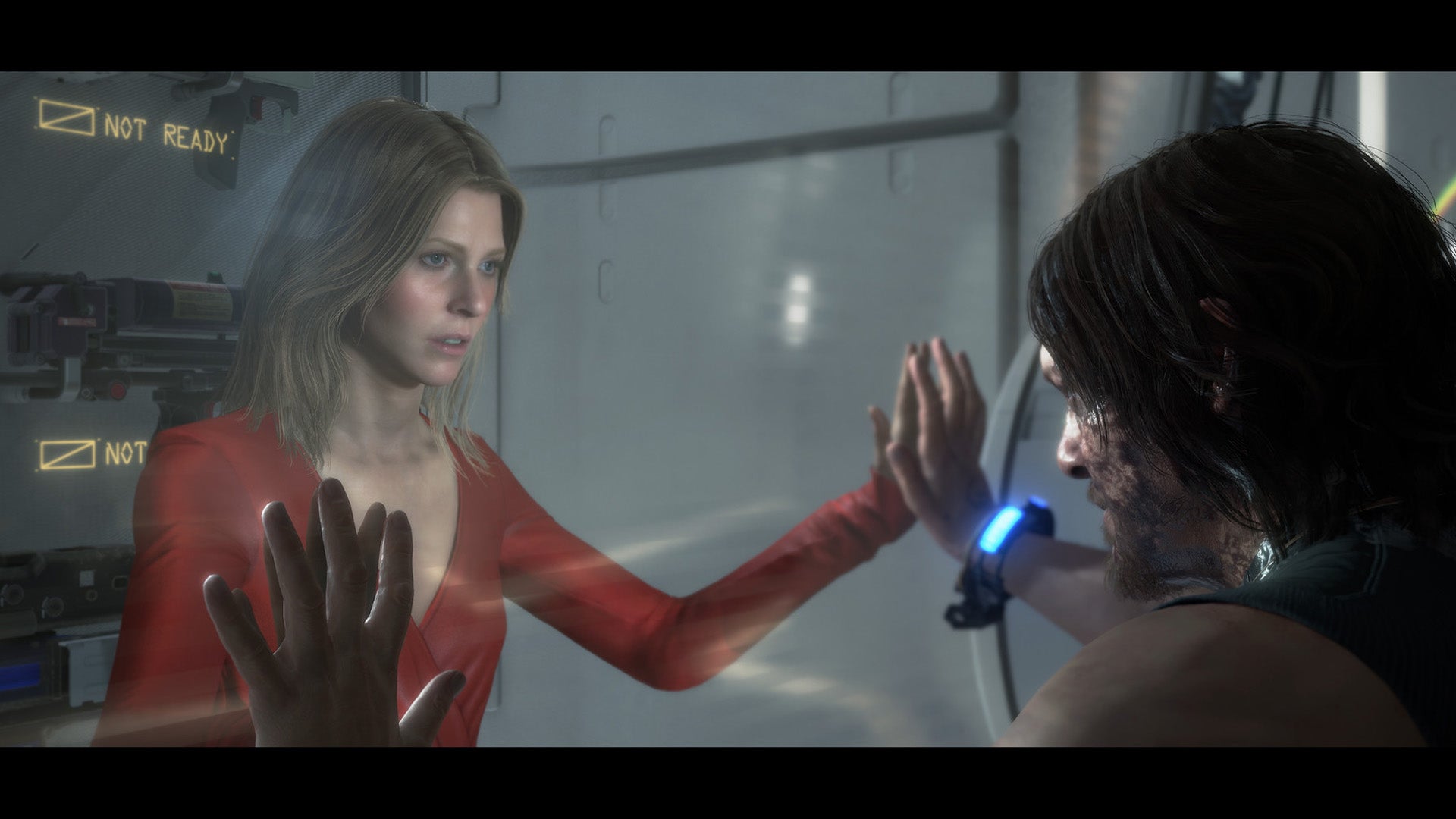
If you want more: Games about travelling across the United States, stealth action, intense narrative themes, realtime item and resource management, daddy sims (no, not that kind, jeez)
Notable differences: A sometimes-incomprehensible plot, longer periods of silence and travelling, open-world structure, less emphasis on gunplay
Availability: Windows (Steam Deck OK), PS4, PS5
If you just wrapped Joel and Ellie’s roadtrip across the United States and are in the mood to go West yet again, Death Stranding has another “let’s save the world” journey for you. But this time, you’d better be in the mood for walking. And instead of delivering a girl who might or might not present an opportunity for a cure, you’re gonna be delivering pizzas, old game consoles, frozen eggs and sperm, “high-performance underwear,” medicine, a necklace of USB keys that will connect everyone to the internet yet again, and much, much more.
There’s no doubt about it: Death Stranding is a weird fucking game. Let me attempt to summarize the premise: You are a delivery guy who must travel a world wrecked by the re-emergence of the dead who are only visible when you’re connected to a baby in a jar. You’ll face off against said undead, try to keep your baby calm and happy while also caring for your packages, deal with a Troy Baker-voiced antagonist, and will try to walk away from its overly heady and lengthy narrative with at least some understanding of what the fuck that was all about.
Read More: Death Stranding: The Kotaku Review
All the weird, avant-garde nonsense of its narrative and gameplay aside, Death Stranding is at its core an open world game heavily reliant on item and resource management. You’ll need to use ladders, ropes, 3D-printed bridges and structures, and even some weapons and vehicles in your journey across a seemingly vacant and abandoned United States. Combat is almost always prefaced with stealth, and though you might think delivering packages is boring, the long-stretches of distance you’ll cover, often in silence, offer genuine moments of contemplation and space to think about the game’s winding and eccentric narrative, your own life, whether or not Joel did the right thing by shooting up that hospital, what’s for lunch, etc.
There’s also a Joycean level of interconnected textual depth to Death Stranding. The narrative plays with words that have multiple meanings depending on perspective; and it has some spooky resonance with much of what we’re dealing with in the 21st century in terms of the internet, connectivity, and reliance on one another in society.
Sometimes Death Stranding’s narrative and dialogue sounds like it’s spouting pure gibberish at you; and then a character will drop a single line of dialogue such as “I brought you a metaphor,” or you’ll come across an intriguing email about civilizations and extinctions and, there you go, you just can’t help but think about the direct and indirect meaning of it all for hours on end (especially if you’re stoned).
Just as The Last of Us will give you resonant themes of violence, loss, and togetherness to think about, Death Stranding presents a fascinating cognitive puzzle box for you to bounce around in your head.
Also, don’t bother with the original version. Jump straight into the Director’s Cut if you can.
Dead Space (Remake)
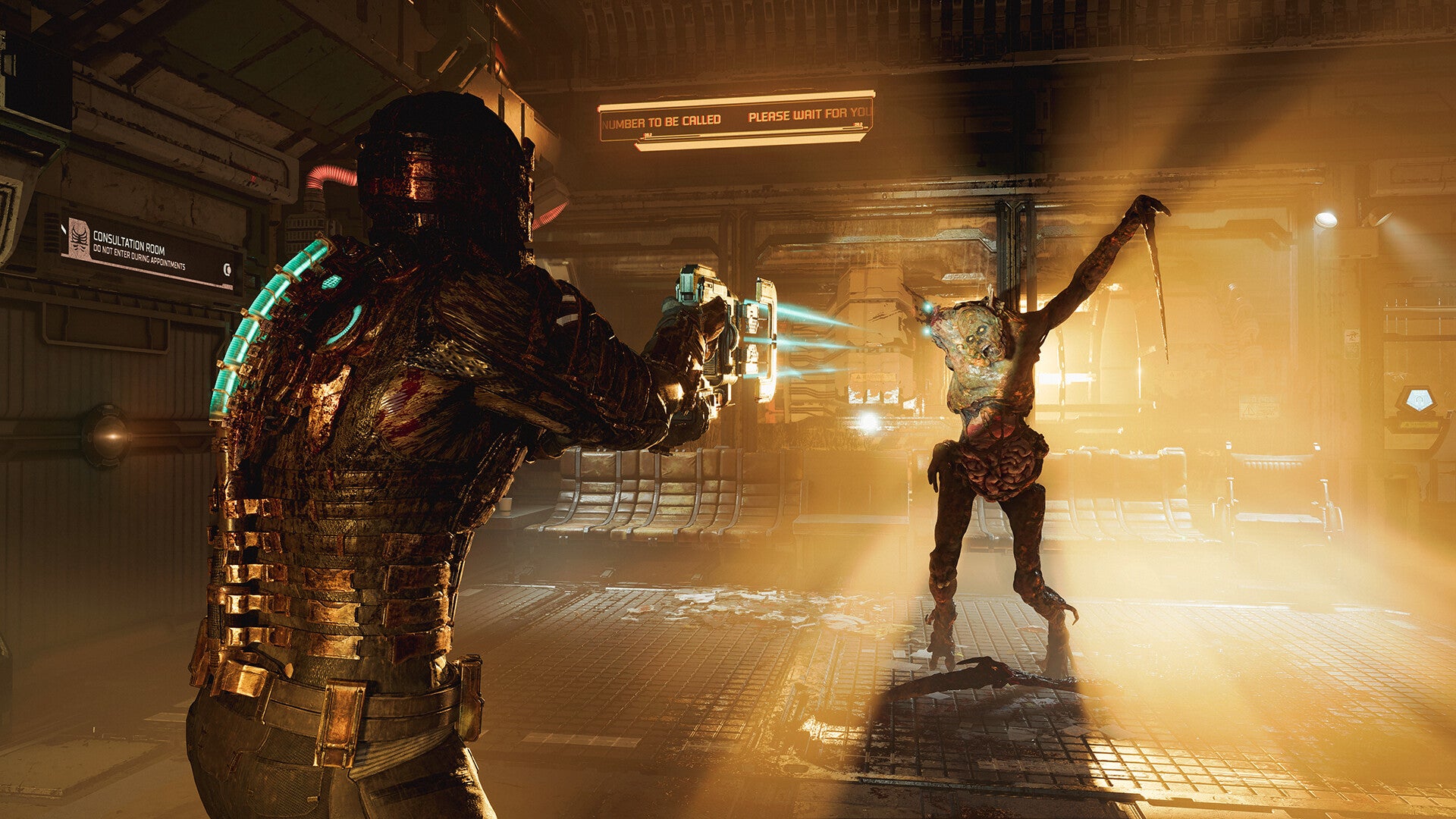
If you want more: Survival horror where it’s you against the forces of the undead
Notable differences: Sci-fi premise, lone protagonist, unconventional weapons and shooting challenges, no human opponents (in the first two games), no stealth
Availability:
Dead Space (2023 remake): Windows (Steam Deck OK), Xbox Series S|X, PS5
Dead Space (Original), 2, and 3: Windows (Steam Deck YMMV), Xbox 360, Xbox One, Xbox Series S|X, PS3
Dead Space, the hit sci-fi survival horror game from 2008, was recently remade and although its well-preserved gameplay feels a little dated, it’s definitely worth checking out if you’re looking for another third-person survival horror game with an emphasis on shooting. Its twist on where you’re supposed to aim, plus its science fiction setting, might be a welcome change of pace from the more conventional gameplay and realism-aspiring setting of The Last of Us.
Read More: Dead Space Remake: The Kotaku Review
As just mentioned, even with shiny new graphics, Dead Space feels very 2008. But the challenge of dismembering your opponents to kill them, instead of just aiming for the head like you do in The Last of Us, still remains quite interesting. Sadly, most of the encounters in Dead Space are very direct and forced, meaning that while you have an interesting way of dispatching with them, it does get very samey after a while.
Like The Last of Us, you’ll be surviving in a fallen world. The abandoned and morphed space station you must brave has a clear post-apocalyptic feeling to it, though the series-signature Necromorphs are way more fantastical in design and concept.
If you want more survival horror, but could go for a change of scenery, Dead Space’s creepily morphed undead will make for a great challenge after dealing with the clickers and runners.
Gears of War
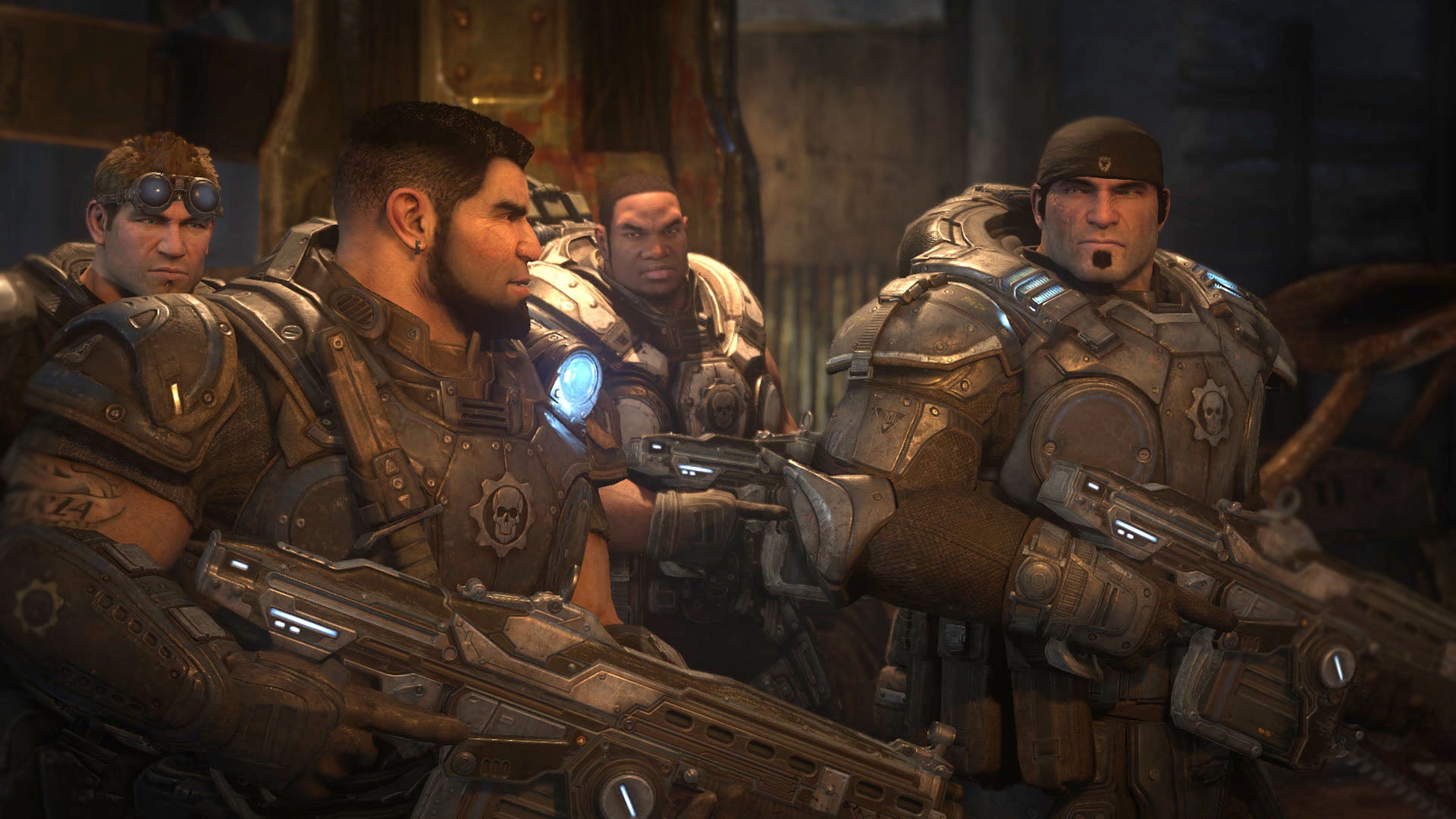
If you want more: Third-person shooting, a tale of human survival against creepy things that go bump in the night
Notable differences: Not a survival horror game, more conventional third-person shooting, less-realistic setting and premise, and fucking chainsaws, baby
Availability: Windows (Steam Deck not directly supported) Xbox 360, Xbox One, Xbox Series X|S
Gears of War and The Last of Us represent two divergent paths from the wide influence of Resident Evil 4. Both are over-the-shoulder third-person games, both have you fight monstrous foes, and both feature present and looming threats to what’s left of civilisation. But Gears wants to give you more of a power fantasy, which might sound like a treat after roughing it out there with Joel and Ellie. If TLoU’s infected and arseholes-with-guns™ had you feeling against the wall a bit too much, Gears is here with foul-mouthed soldiers equipped with chainsaw guns and friggin mega lasers that come down from the sky and obliterate everything.
Though you’re typically better stocked and evenly matched when tup against Gears’ Locusts than you are the infected in TLoU, there’s still a similar theme of desperation and loss: Gears of War’s human world of Sera has been forced into a defeated, post-apocalyptic state by the emergence of the Locust horde. As a player you have a lot of power to go against that, but it’s clear you’re one of the last hopes for a doomed world. Sound familiar?
There are five whole, numbered Gears of War games worth caring about (we shall speak not of Judgment). The original has been remastered in Gears of War Ultimate for more modern Xbox consoles. Two and three are excellent in terms of gameplay, but the story goes a little off the rails. Scratch that. The story gets really, dramatically fucking stupid. But it’s a fun time!
The recent sequels, Gears 4 and 5 are also of high quality and worth checking out, particularly 5, and feature a change of protagonists from the originals. I’d describe them as a soft reboot, so if you did play the Gears games, but maybe not the whole trilogy or don’t remember the details too much, just jump into 4 and have a fun time destroying shit.
The Last of Us: Part II
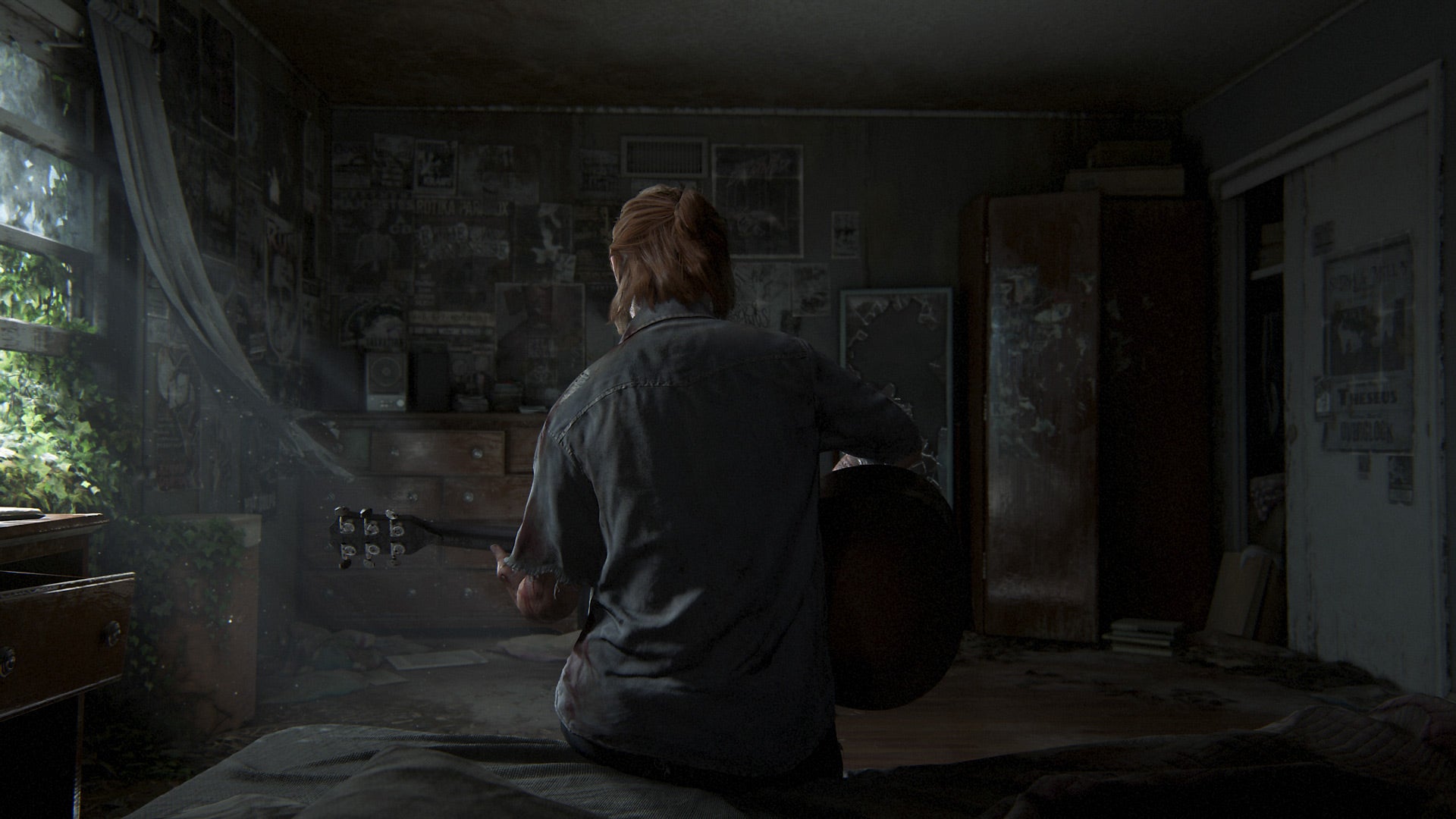
If you want more: Joel and Ellie and friends, TLoU’s world, emotional crises
Notable differences: Significantly longer, features way more characters, subtle tweaks to the gameplay
Availability: PS4, PS5
If you haven’t played The Last of Us’ direct sequel, then Part II seems like an obvious follow-up to the first game. But before you jump in, you might want to consider a few things. Though Part II is a great game, the existence of the excellent HBO adaptation changes things. It might be worth waiting to see the rest of the story play out on-screen with Pedro Pascal and Bella Ramsey, especially if the show was your introduction to the world and they are “your” Joel and Ellie. These games may have sold us on this classic duo, but the show has brought us a new level of emotional intimacy in these characters — so much so that I’m starting to find the games a little rigid in comparison.
The Last of Us: Part II is everything you loved from the first one, but it feels way more fluid (even compared to the recent 2022 remake of the first game). The added ability to go prone adds a new dimension to the combat and there are some more interesting environmental puzzles than what was in the first game.
If you’re planning to head into Part II, however, be ready for a long game. Seriously: there’s kind of two games in one here. Also, a warning: The PS5’s wonderful homescreen, which sometimes features photos taken from the community, will sometimes feature clear and direct spoilers for this game. If you’ve somehow managed to steer clear of spoilers in the two years since Part II hit the PS4, few things will suck more than Sony’s shoehorned social features literally showing you how a specific character dies. Launch into the game as quickly as you can when firing this up on a PS5.
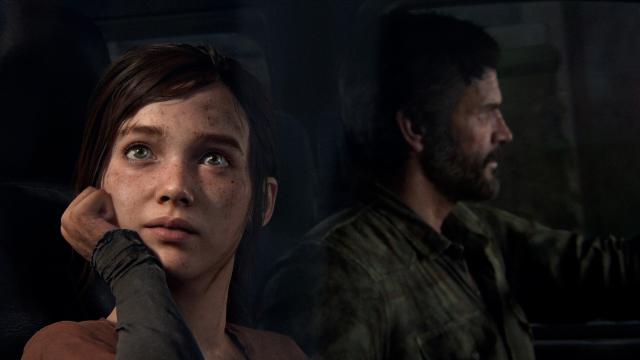
Leave a Reply